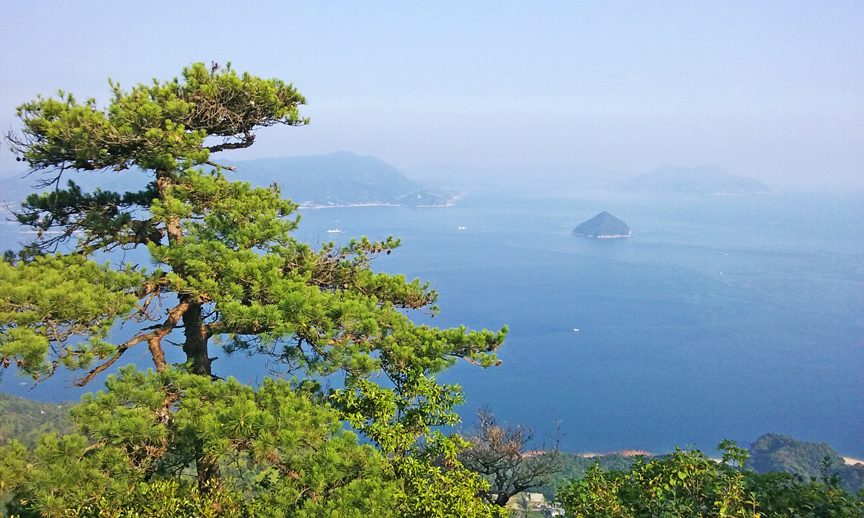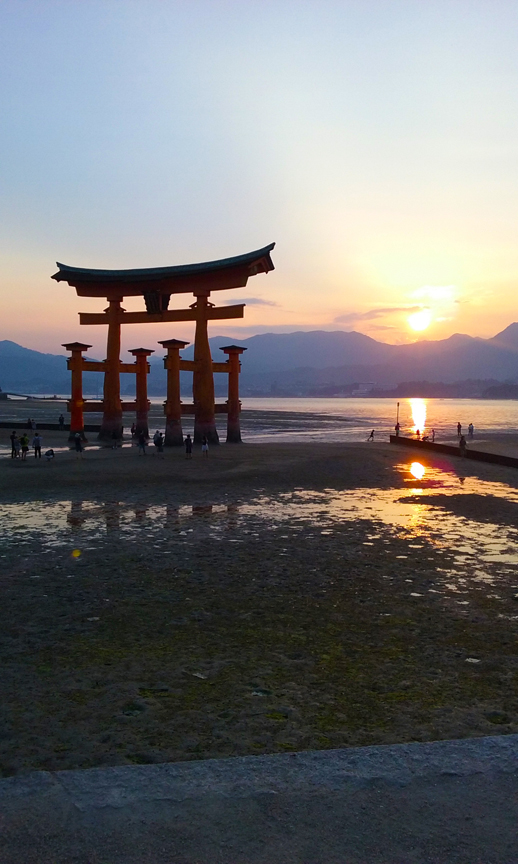Miyajima

Miyajima is one of those places that I'd seen pictures of a hundred times, but knew nothing else about. The giant, vermilion torii gate that seems to float on the water as you reach the island is one of Japan's most iconic sites. What you might not know, however, is how incredibly easy it is to visit Miyajima.
Nikko took a 3-hour train ride to reach, both the snow monkeys and the cat, fox, and rabbit islands proved too far away to bother putting on our streamlined itinerary. But Miyajima is essentially right next to Hiroshima, taking about half an hour to reach by metro.
After leaving our hostel, we attempted to find the correct station (there are three Osaka Namba's) for the Shinkansen. We bought our tickets before realizing we needed to do a short transfer to Shin Osaka - again the ticket girl didn't tell us. Luckily, I figured it out and we arrived on time. Monica slept on the train while I ate and wrote.
We arrived in Hiroshima faster than I'd expected (an hour and forty minutes). We took the metro one stop, the trekked the few blocks to Roku Hostel. The guy minding the hostel midday didn't speak much English, aside from, "check in at 5:00," but we managed to leave our bags, use the bathroom, and ask for a map to Miyajima, which he helpfully gave us, pointing out the best route. We got back on the JR train and headed for the ferry.
I knew I was going to like Miyajima as the train neared the port and I saw glimpses of the inland sea between houses. (It felt a little like taking the subway out to Coney Island.) We didn't have to wait long for the ferry, which didn't take SUICA cards, but was only 320Y round trip. We passed oyster pots on our way out to the floating torii gate. We knew we'd miss high tide (noon and midnight) but water still covered its base.
After leaving the ferry, we checked out a few shops on our way to Itsukushima Shrine. Like Nara, loads of sacred deer wander around the island. They seemed a teensy bit more chill than their Nara cousins. We sat and enjoyed a view of the torii gate for a while before walking over to the shrine, which was teeming with school groups.
Despite not being surrounded by water at the time, the elevated pathways were still really cool. The whole thing was open to the air, giving it a different feel than most of the other shrines and temples we'd visited. Another difference is the noh stage, used to reenact tales of the gods.
The shrine and torii gate were built over the water because, for many years, the island was considered so sacred that people weren't allowed to step onto its soil. (The dramatically arched bridge that connects the shrine to the mainland was closed, and I'm assuming, usually is.) To this day, no births or deaths are allowed on the island - the pregnant and the very old or infirm go to the mainland.
As we neared the exit, I spotted the shuin booth, It was manned by a kannushi in white and robin's egg blue robes. It felt so formal, I was a little concerned that maybe I shouldn't be asking for shuin here - but he was one of the friendlier people to calligraph and stamp my book.
I took a few more photos as we left the shrine - the light was gorgeous - then walked out to the torii gate while Monica chilled with the deer. It was neat to see the giant piles up close. The gate isn't built into the sand - it's merely so heavy that it stays in place, despite the tide.
We walked back toward town, checking out a few more souvenir shops - I never got to try the oysters :'( - before deciding to do the ropeway (cable car) up Mt. Misen. You can hike as well, but honestly, getting whisked up a mountain with little effort on our part was part of the plan, given the temperature.

The first, smaller cable car took us up the side of a mountain, gliding above the forest. The second was larger and fit more people. We had to shoo a wasp out before the doors closed. Then we were off, with a great view of the Seto Inland Sea.
Because we went so late in the afternoon, by the time we arrived at the top, we literally only had till the next cable car arrived to explore. The top of Mt. Misen was dotted with signs warning us to watch for mamushi, one of Japan's poisonous snakes. We stuck to the paths.
There was also a sign telling about a wonder of Mt. Misen that had a connection to Koya-san, which we had previously visited. Kobo Daishi founded a temple on the mountain in 806 CE, lighting a flame there that is still burning today. The flame was used to light the 'Flame of Peace' at Hiroshima's Peace Park.
Then, we decided to sit and watch till the sun set by the torii gate. It was nice - not a particularly stunning sunset, but just being on Miyajima was so peaceful and relaxing. Afterwards, we slowly walked to the ferry and enjoyed the twilight trip back to the mainland.



Comments
Post a Comment